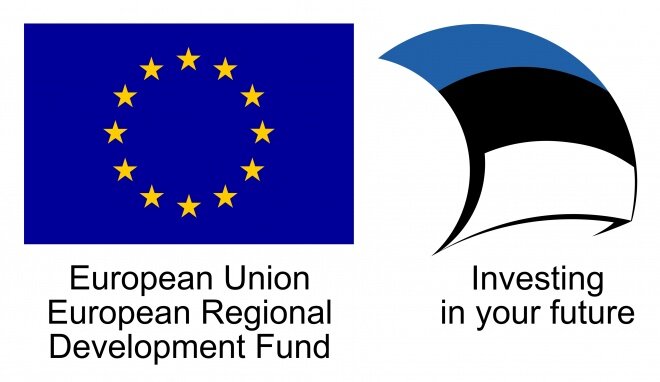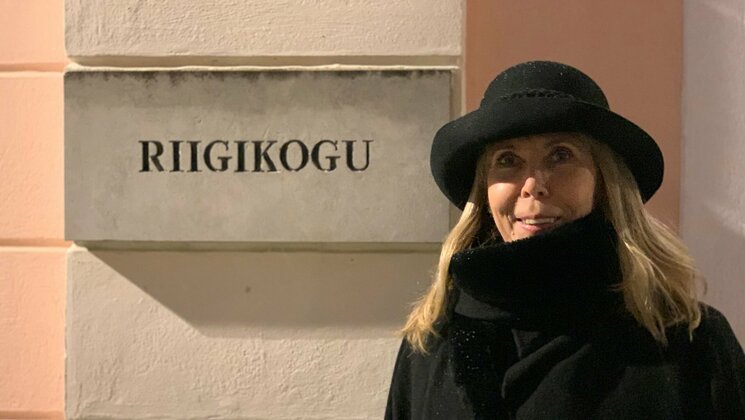-
Humanitaarteaduste ja kunstide valdkondHumanitaarteaduste ja kunstide valdkonna dekanaatJakobi 2, r 116-121 51005 Tartu linn, Tartu linn, Tartumaa EST0Ajaloo ja arheoloogia instituutJakobi 2 51005 Tartu linn, Tartu linn, Tartumaa EST0Eesti ja üldkeeleteaduse instituutJakobi 2, IV korrus 51005 Tartu linn, Tartu linn, Tartumaa EST0Filosoofia ja semiootika instituutJakobi 2, III korrus, ruumid 302-337 51005 Tartu linn, Tartu linn, Tartumaa EST0Kultuuriteaduste instituutÜlikooli 16 51003 Tartu linn, Tartu linn, Tartumaa EST0Maailma keelte ja kultuuride instituutLossi 3 51003 Tartu linn, Tartu linn, Tartumaa EST0UsuteaduskondÜlikooli 18 50090 Tartu linn, Tartu linn, Tartumaa EST0Viljandi kultuuriakadeemiaPosti 1 71004 Viljandi linn, Viljandimaa EST0Humanitaarteaduste ja kunstide valdkonna emeriitprofessorid0Humanitaarteaduste ja kunstide valdkonna emeriitdotsendid0Sotsiaalteaduste valdkondSotsiaalteaduste valdkonna dekanaatLossi 36 51003 Tartu linn, Tartu linn, Tartumaa EST0Haridusteaduste instituutJakobi 5 51005 Tartu linn, Tartu linn, Tartumaa EST0Johan Skytte poliitikauuringute instituutLossi 36, ruum 301 51003 Tartu linn, Tartu linn, Tartumaa EST0MajandusteaduskondNarva mnt 18 51009 Tartu linn, Tartu linn, Tartumaa EST0Psühholoogia instituutNäituse 2 50409 Tartu linn, Tartu linn, Tartumaa EST0ÕigusteaduskondNäituse 20 - 324 50409 Tartu linn, Tartu linn, Tartumaa EST0Ühiskonnateaduste instituutLossi 36 51003 Tartu linn, Tartu linn, Tartumaa EST0Narva kolledžRaekoja plats 2 20307 Narva linn, Ida-Virumaa EST0Pärnu kolledžRingi 35 80012 Pärnu linn, Pärnu linn, Pärnumaa EST0Sotsiaalteaduste valdkonna emeriitprofessorid0Sotsiaalteaduste valdkonna emeriitdotsendid0Meditsiiniteaduste valdkondMeditsiiniteaduste valdkonna dekanaatRavila 19 50411 Tartu linn, Tartu linn, Tartumaa ESTBio- ja siirdemeditsiini instituutBiomeedikum, Ravila 19 50411 Tartu linn, Tartu linn, Tartumaa ESTFarmaatsia instituutNooruse 1 50411 Tartu linn, Tartu linn, Tartumaa ESTHambaarstiteaduse instituutL. Puusepa 1a 50406 Tartu linn, Tartu linn, Tartumaa ESTKliinilise meditsiini instituutL. Puusepa 8 50406 Tartu linn, Tartu linn, Tartumaa ESTPeremeditsiini ja rahvatervishoiu instituutRavila 19 50411 Tartu linn, Tartu linn, Tartumaa ESTSporditeaduste ja füsioteraapia instituutUjula 4 51008 Tartu linn, Tartu linn, Tartumaa ESTMeditsiiniteaduste valdkonna emeriitprofessorid0Meditsiiniteaduste valdkonna emeriitdotsendid0Loodus- ja täppisteaduste valdkondLoodus- ja täppisteaduste valdkonna dekanaatVanemuise 46 - 208 51003 Tartu linn, Tartu linn, Tartumaa ESTArvutiteaduse instituutNarva mnt 18 51009 Tartu linn, Tartu linn, Tartumaa ESTGenoomika instituutRiia 23b/2 51010 Tartu linn, Tartu linn, Tartumaa ESTEesti mereinstituutMäealuse 14 12618 Tallinn, Harjumaa EST0Füüsika instituutKeemia instituutRavila 14a 50411 Tartu linn, Tartu linn, Tartumaa EST0Matemaatika ja statistika instituutNarva mnt 18 51009 Tartu linn, Tartu linn, Tartumaa EST0Molekulaar- ja rakubioloogia instituutRiia 23, 23b - 134 51010 Tartu linn, Tartu linn, Tartumaa ESTTartu observatooriumObservatooriumi 1 61602 Tõravere alevik, Nõo vald, Tartumaa EST0TehnoloogiainstituutNooruse 1 50411 Tartu linn, Tartu linn, Tartumaa ESTÖkoloogia ja maateaduste instituutJ. Liivi tn 2 50409 Tartu linn, Tartu linn, Tartumaa ESTLoodus- ja täppisteaduste valdkonna emeriitprofessorid0Loodus- ja täppisteaduste valdkonna emeriitdotsendid0Bioinseneeria instituutNooruse 1 50411 Tartu linn, Tartu linn, Tartumaa ESTAkadeemilise sekretäri tegevusvaldkondPersonaliosakondUppsala 6, Lossi 36 51003 Tartu linn, Tartu linn, Tartumaa EST0Finantsjuhi tegevusvaldkondRahandusosakondJakobi 4 51005 Tartu linn, Tartu linn, Tartumaa EST0Kantsleri tegevusvaldkondInfotehnoloogia osakondUppsala 10 51003 Tartu linn, Tartu linn, Tartumaa EST0KantseleiÜlikooli 17 (III korrus) 51005 Tartu linn, Tartu linn, Tartumaa EST0Kinnisvaraosakond0Turundus- ja kommunikatsiooniosakondÜlikooli 18, ruumid 102, 104, 209, 210 50090 Tartu linn, Tartu linn, Tartumaa EST0Rektori tegevusvaldkondRektoraadi bürooÜlikooli 18 50090 Tartu linn, Tartu linn, Tartumaa ESTSiseauditi bürooÕppeprorektori tegevusvaldkondÕppeosakondTeaduskoolUppsala 10 51003 Tartu linn, Tartu linn, Tartumaa EST0Üliõpilaskonna bürooÜlikooli 18b 51005 Tartu linn, Tartu linn, Tartumaa EST0Õppimis- ja õpetamiskeskusLossi 36-401 51003 Tartu linn, Tartu linn, Tartumaa ESTTeadusprorektori tegevusvaldkondTartu Ülikooli raamatukoguW. Struve 1 50091 Tartu linn, Tartu linn, Tartumaa EST0GrandikeskusRaekoja plats 9, III korrus 51004 Tartu linn, Tartu linn, Tartumaa ESTArendusprorektori tegevusvaldkondEttevõtlus- ja innovatsioonikeskusNarva mnt 18 51009 Tartu linn, Tartu linn, Tartumaa EST0Loodusmuuseum ja botaanikaaedVanemuise 46 51003 Tartu linn, Tartu linn, Tartumaa EST0Rahvusvahelise koostöö ja protokolli osakond0MuuseumLossi 25 51003 Tartu linn, Tartu linn, Tartumaa EST0
Abstraktide tähtaeg pikendatud 28. veebruarini: XII Tartu semiootika suvekool “Ruumide ja kirjaoskuste semiootilised mõõtmed”, 17.-20. augustil 2019
17.-20. augustil 2019 toimub järjekordne Tartu semiootika suvekool teemal “Ruumide ja kirjaoskuste semiootilised mõõtmed”. Teema lähtub vaatest, et keel ja ruum on kaks keskset maailmakogemuse korrastamise vahendit. XII semiootika suvekoolis uuritakse kirjaoskuse mõiste ja ruumimudelite ülekantavust ja rakendatavust kahe probleemideringi analüüsimisel: digitaalse tehnoloogiaga kaasnevad muutused kultuuris ja ühiskonnas ning teiste liikide ruumikogemus ja agentsus mitmeliigilises keskkonnas.
CFP: *Tartu Summer School of Semiotics: Semiotic dimensions of spaces & literacies*
Juri Lotman proposed that the primary semiotic dualism lies in the duplication of the world in language and the duplication of the human in space: „Genetically speaking, culture is built upon two primary languages. One of these is the natural language used by humans in everyday communication. […] The nature of the second primary language is not so obvious. What is under discussion is the structural model of space“ (Lotman 1992: 142). The organizers of the next Tartu Summer School of Semiotics find continuous inspiration in this statement and call for discussing the functioning of cultural languages as mediators of human and non-human environments and as developers of cultural competence.
Understanding culture via its spatial organization has been a characteristic of Tartu semiotics. The structural models of space facilitate making sense of nature, society and culture as living environments. The creation of such models is simultaneously creation of descriptive languages for conceptualising cultural experience and on a more essential level, cultural mediation. The latter affects both individual and collective capacity to interpret reality and underpins the formation and perception of cultural identity. On the one hand, the contemporary cultural dynamics has underlined the necessity of studying the cultural environment in relation to the technological advancement: from the digitalization of (everyday) culture to cultural polyglotism, including improved foreign language skills, digital literacy and emergence of transmedial spaces of communication.
On the other hand, the ecological changes in our living environment have created the need to analyse the mutual influences of human cultural and non-human spaces: the ways that different species both encode and interpret their surroundings and contexts. These include the human modes of textualising space in artistic and non-artistic languages, other species’ modes of learning about their surroundings and the ways their agency becomes manifested in their relations with our mutually shared environments. At the same time, the scientific understanding of these relations clearly needs to be balanced with the development of related literacies for mediating the knowledge to the members of culture.
We invite all the semioticians studying the dynamics of nature, society and culture to Tartu in order to discuss a topic simultaneously universal and current for the era of the Anthropocene - the semiotic dimensions of spaces and literacies. We welcome both 20 minute presentations as well as more unconventional formats (à 5-10 minutes) that would provoke thoughts by introducing works and ideas in progress. 300-600 words abstracts (for 20 minute papers) or short comments on why you would like to share your work in progress at Tartu Summer School of Semiotics should be submitted by the extended deadline February 28, 2019 to semiotics [ät] ut.ee. Additional information will be available at: tsss.ut.ee
Topics that we welcome non-exhaustively include:
* Making sense of digital fragmentation through spatial models and
metalanguage;
* Spatial applications for mediating cultural heritage;
* Developmental changes in the structuring and literacy of space;
* Animal agencies in adapting to anthropogenic and hybrid environments;
* Interactions of semiotic and spatial practices in environmental education.
Reference: Lotman, Juri 1992a. Tekst i poliglotizm kul’tury [Text and cultural polyglotism]. In: Lotman, Juri, Izbrannye stat’i. Vol. 1. Stat’i po tipologii kul’tury. Tallinn: Aleksandra, 142–147.
The event is supported by the University of Tartu's ASTRA project PER ASPERA (European Union, European Regional Development Fund).

Loe veel sarnaseid uudiseid




